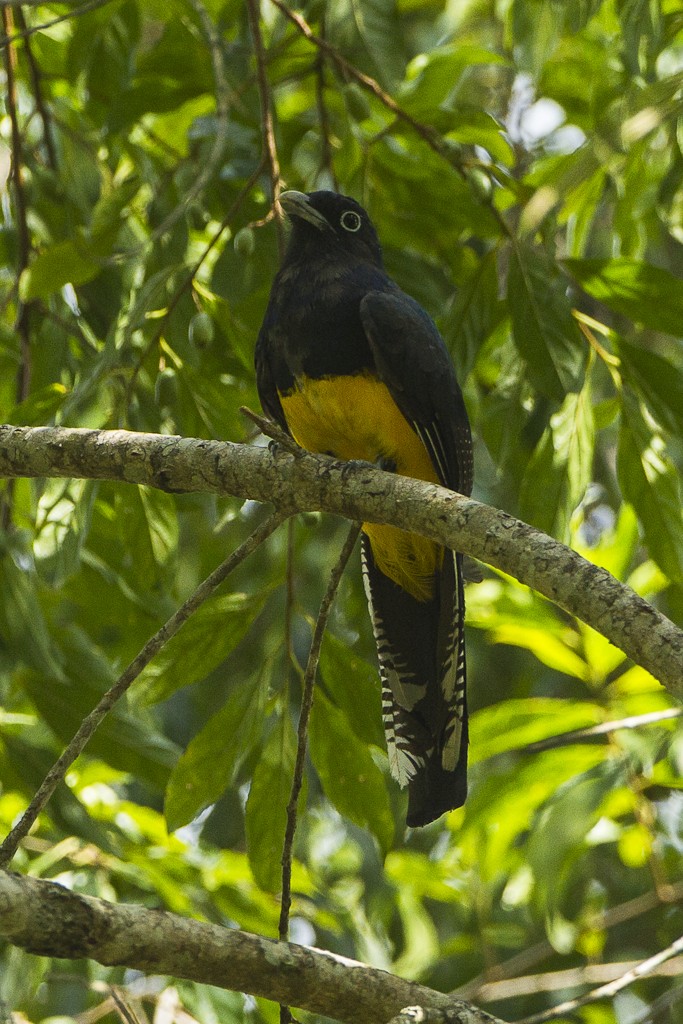Green-backed Trogon
A species of Neotropical Trogons Scientific name : Trogon viridis Genus : Neotropical Trogons
Green-backed Trogon, A species of Neotropical Trogons
Botanical name: Trogon viridis
Genus: Neotropical Trogons
Content
Description General Info
 Photo By Francesco Veronesi , used under CC-BY-SA-2.0 /Cropped and compressed from original
Photo By Francesco Veronesi , used under CC-BY-SA-2.0 /Cropped and compressed from original Description
This relatively large trogon is 28 to 30 centimetres (11 to 12 in) long. As most trogons, it is strongly sexually dimorphic. In the male the head and upper breast are dark blue (appears blackish in poor light), and the back is green. The lower underparts are orange yellow. The wings are black, vermiculated with white. The undertail is black and white: Each feather has a broad black base and a broad white tip and outer edge. The complete eye-ring is pale bluish. The female green-backed trogon resembles the male, but has a grey back, head and breast, and distinct black-and-white barring mainly to the outer webs of each tail feather. For comparison, the similar but smaller violaceous trogon has a yellow (male) or incomplete white eye-ring (female), and the male also has barring to the undertail. There is no overlap in the distribution of the green-backed and white-tailed trogons, but the two can be separated by the undertail pattern: Unlike the green-backed trogon, the male white-tailed trogon only has a very narrow black base to each feather (the undertail appears almost entirely white), and the female mainly has black-and-white barring to the inner webs of each feather (can be difficult to see). The male white-tailed trogon also has a bluer rump than the green-backed trogon. The song of the green-backed trogon consists of about 20 cow notes that start slow, but accelerate towards the end. The song is slower than the white-tailed trogon, and higher pitched than the black-tailed trogon. 
Size
28 cm
Nest Placement
Cavity
Feeding Habits
Green-backed Trogon primarily consumes fruits from families like Melastomaceae and Myrtaceae, as well as arthropods and small lizards. Foraging mainly at mid-canopy levels, green-backed Trogon feeds both independently and in mixed-species flocks, showing a dietary preference skewed more towards fruit than other Trogon species.
Habitat
Green-backed Trogon thrives in the canopy and subcanopy of humid lowland forests, encompassing pristine, selectively logged, and secondary growth areas such as forest edges and clearings. Adaptable to disturbed habitats, its presence increases in logged forests. It resides broadly within Amazonian transition forests, savannas, and sandy ridge forests, also frequenting swamp and mangrove zones.
Dite type
Frugivorous
General Info
Feeding Habits
Bird food type

Fruit
Species Status
Not globally threatened.
Scientific Classification
Phylum
Chordates Class
Birds Order
Trogons Family
Trogons and quetzals Genus
Neotropical Trogons Species
Green-backed Trogon